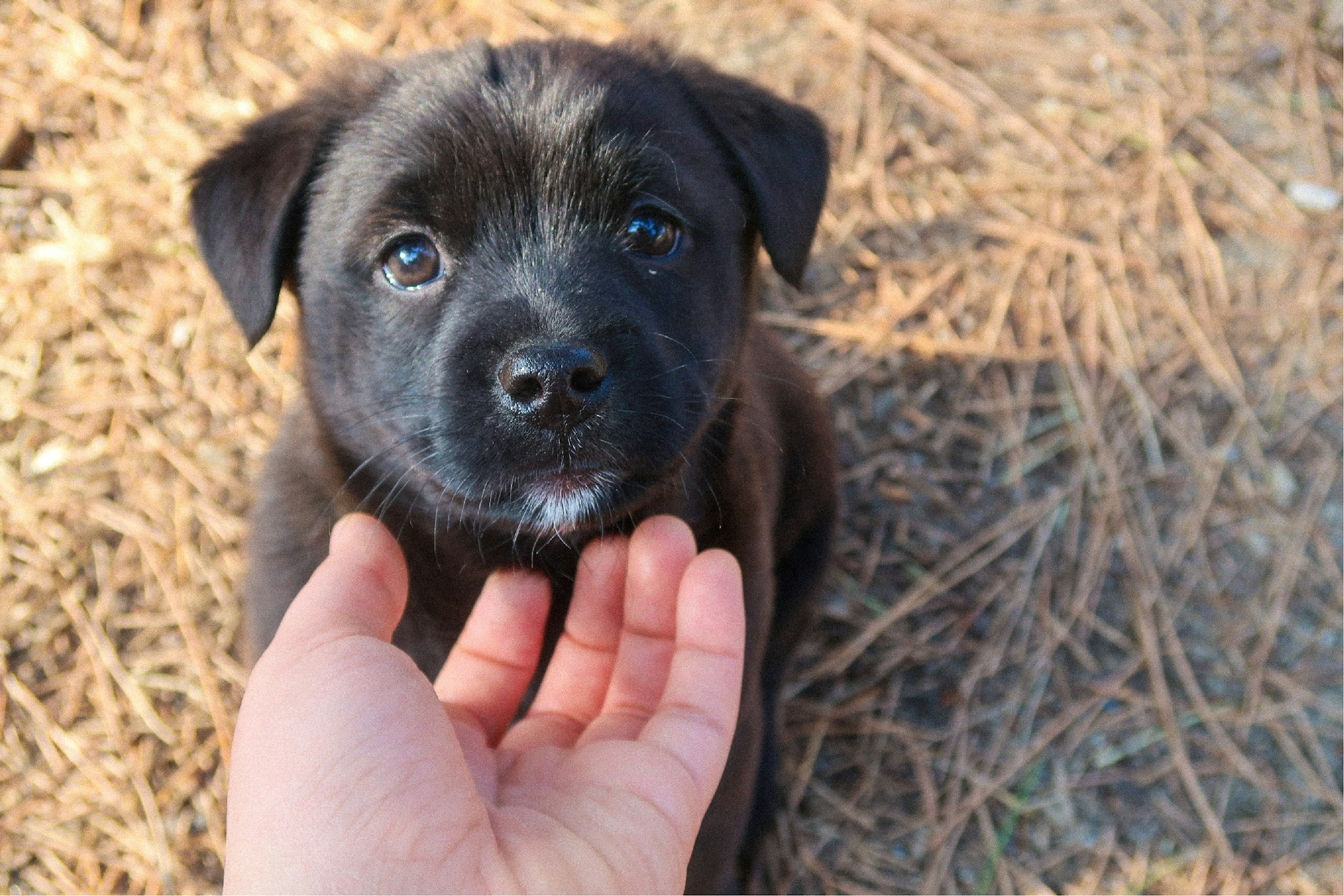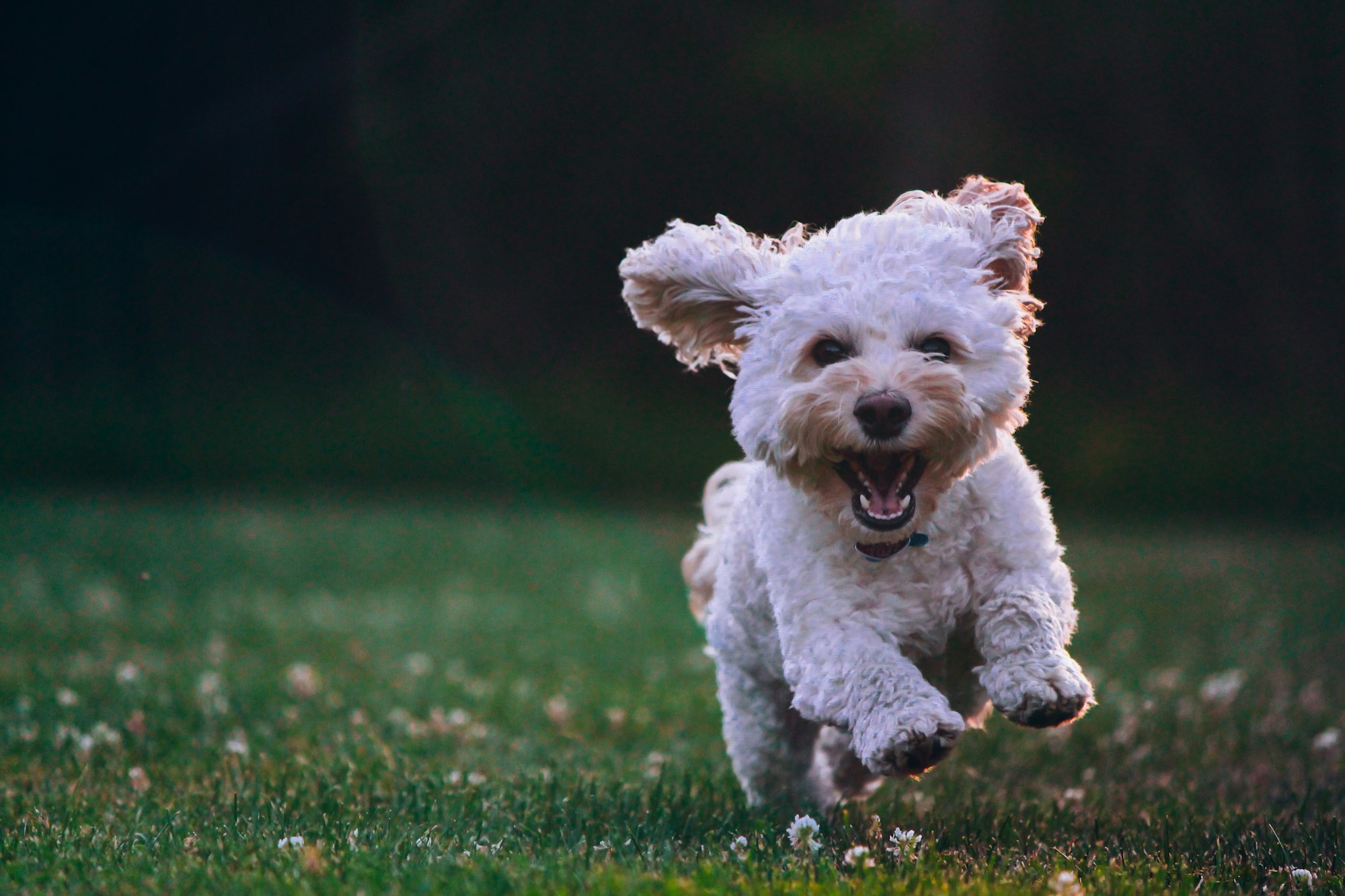Bringing a new puppy into your home is an exciting adventure, but sometimes, the constant barking can turn that excitement into frustration. In this guide, we'll explore effective strategies to address and curb your puppy's excessive barking, ensuring a harmonious relationship between you and your furry friend.
Why Do Puppies Bark?
Understanding the root of the issue is crucial. Puppies bark for various reasons, including communication needs, attention-seeking behavior, and triggers like fear or anxiety. Identifying the cause is the first step toward effective training.
When Is Barking a Problem?
Barking is a language in itself for our canine companions. However, there comes a point when the symphony of barks turns into a problem. In this section, we'll decipher the bark code and explore when those vocalizations might be a cause for concern.

Disturbing the Neighbors
The harmonious coexistence with neighbors can be disrupted when your furry friend decides to turn up the volume. Excessive barking, especially during the wee hours, can strain neighborly relations. Recognizing when your pup's barks are disturbing others is crucial in maintaining a peaceful community.
Potential Health Concerns
Barking excessively can be a sign of underlying health issues. If your pup suddenly starts barking more than usual, it might be time for a visit to the vet. Pain, discomfort, or even cognitive issues could be manifesting through heightened vocalization.
Impact on the Owner-Pet Relationship
Picture this: every time you sit down to relax, your pup starts a barking marathon. While communication is vital, excessive barking can strain the special bond you share. It's not just a noise issue; it's a matter of fostering a harmonious relationship.

Positive Reinforcement Training: Turning Barks into Brilliance
Now that we've identified when barking becomes a problem, let's delve into positive reinforcement training, a powerful tool to transform your pup's barks into brilliance. This method not only addresses excessive barking but also strengthens the communication between you and your furry companion.
Basics of Positive Reinforcement
Positive reinforcement involves rewarding desired behavior to encourage its repetition. When your pup exhibits calmness or stops barking on command, reward them with treats, praise, or playtime. This creates a positive association with being quiet.
Associating Quietness with Rewards
Every time your pup quiets down when prompted, reward them immediately. This association between quiet behavior and positive outcomes reinforces the idea that being puppy calm is not only acceptable but beneficial.
Consistency in Training Sessions
Consistency is the linchpin of positive reinforcement training. Whether it's using a specific command or offering treats, be consistent in your approach. This repetition helps your pup understand the connection between their actions and the ensuing rewards.
Understanding Body Language: Decoding the Canine Dictionary
Beyond barks, your pup communicates through body language. Understanding the subtle cues can provide insights into their emotional state and help address the root causes of barking. Let's embark on a journey to decode the canine dictionary.
Identifying Stress Signals
Stress is a common trigger for excessive barking. Learn to recognize stress signals in your pup, such as pacing, trembling, or avoiding eye contact. Addressing the source of stress can significantly reduce barking.
Addressing the Root Cause
Body language often reveals the why behind the bark. If your pup barks when meeting new people, it might be a sign of fear or insecurity. By understanding their body language, you can address the root cause, creating a more comfortable environment.
Creating a Comfortable Environment
A comfortable environment is essential for curbing barking. Pay attention to how your pup reacts to different stimuli and adjust their surroundings accordingly. A relaxed environment contributes to a quieter and happier pup.
Stay tuned for the next section, where we'll explore the impact of interactive toys and distractions on your puppy's barking behavior.
Interactive Toys and Distractions
Boredom is a notorious accomplice to excessive barking in our furry friends. In this section, we'll explore the world of interactive dog toys and distractions as powerful tools to keep your pup engaged and, consequently, reduce their penchant for vocalization.
Providing Mental Stimulation
Just like us, dogs need mental exercise to stay happy and content. Interactive toys that dispense treats or challenge your pup's problem-solving skills are excellent for keeping their minds sharp and occupied.
Choosing Appropriate Toys
Not all puzzle toys are created equal. Understanding your pup's preferences and play style is crucial. Whether it's a puzzle feeder, a durable chew toy, or an interactive squeaky toy, the right choice can turn playtime into a positive outlet for energy.
Establishing a Routine
Consistency is key, even in playtime. Establishing a routine for interactive play and incorporating it into your daily schedule helps channel your pup's energy in a constructive way, minimizing boredom-induced barking.
Socialization and Exposure: A Social Butterfly in the Making
A well-socialized puppy is less likely to react with fear or anxiety, leading to excessive barking. In this section, we'll explore the importance of socialization and controlled exposure to various environments, people, and animals.
Introducing Your Puppy to Various Environments
Early exposure to different environments helps your puppy become adaptable and less prone to anxiety-related barking. Gradually introduce them to new places, both indoors and outdoors, ensuring positive experiences.
Positive Experiences with New People and Animals
Create positive associations by exposing your pup to a variety of people and animals in a controlled manner. Use treats and praise to reinforce positive behavior, fostering confidence and reducing the likelihood of barking in unfamiliar situations.
Gradual Exposure to Stimuli
Whether it's the sound of a vacuum cleaner or the hustle and bustle of a busy street, gradual exposure to various stimuli helps desensitize your pup. This gradual approach prevents overwhelming fear responses and minimizes anxiety-related barking.

Obedience Training Techniques: Turning Barks into Commands
Obedience training is a powerful tool in your arsenal against excessive barking. In this section, we'll explore essential techniques to teach your puppy basic commands and use them to gain control over their vocalizations.
Teaching Basic Commands
Start with fundamental commands like "sit," "stay," and "quiet." These commands not only establish your leadership but also provide a means to control barking. Consistent and positive reinforcement is key to effective training.
Using Commands to Control Barking
Once your pup understands basic commands, incorporate them into situations that typically trigger barking. For example, use the "quiet" command when they start barking and reward them when they comply. This reinforces the connection between the command and the desired behavior.
Reinforcing Good Behavior
Positive reinforcement plays a crucial role in obedience training. Whenever your pup responds appropriately to commands or refrains from barking when prompted, lavish them with praise, treats, or affection. This positive reinforcement strengthens the desired behavior.
Professional Training Classes
While your dedication is commendable, sometimes the expert touch of professional training classes can make a world of difference in curbing excessive barking. In this section, we'll explore the benefits of enlisting the help of a professional dog trainer.
Benefits of Professional Guidance
Professional trainers bring a wealth of knowledge and experience to the table. They can assess your pup's specific needs, tailor training sessions accordingly, and provide expert guidance on addressing excessive barking. The personalized approach enhances the effectiveness of training.
Choosing the Right Trainer
Selecting the right trainer is crucial for the success of professional training classes. Look for certified trainers with positive reviews and a proven track record. A good trainer not only guides your pup but also empowers you with the skills to reinforce training at home.
Evaluating Training Progress
Professional trainers not only initiate training but also help you track progress. They provide valuable insights, address concerns, and adjust strategies as needed. The ongoing evaluation ensures that the training is effective and aligns with your pup's unique personality.
Health Check-Up: Ensuring Well-Being, Silencing Concerns
Sometimes, excessive barking can be a symptom of an underlying health issue. In this section, we'll explore the importance of regular health check-ups to ensure your pup's overall well-being.
Ruling Out Medical Causes
Before diving into behavioral training, it's crucial to rule out any medical causes for excessive barking. Pain, discomfort, or health issues can manifest through vocalizations. A thorough examination by a veterinarian helps identify and address these concerns.
Consulting with a Veterinarian
Schedule regular check-ups with your veterinarian to monitor your pup's health. If excessive barking persists or if there are sudden changes in behavior, consult with your vet. They can perform necessary tests, rule out medical issues, and provide guidance on addressing behavioral concerns.
Maintaining Overall Well-Being
A healthy pup is a happy pup. Besides addressing specific concerns, focus on your pup's overall well-being through proper nutrition, regular exercise, and a stimulating environment. A balanced lifestyle contributes to behavioral health.
Creating a Quiet Zone: A Tranquil Retreat for Your Pup
Amidst the hustle and bustle, every pup needs a quiet retreat. In this section, we'll explore the concept of creating a designated quiet zone for your furry friend.
Designating a Calm Space
Identify a specific area in your home where your pup can retreat when they need peace and quiet. This could be a cozy corner with their bed or a designated crate. Ensure it's away from high-traffic areas to minimize external stimuli.
Utilizing Crate Training
Puppy crate training serves a dual purpose—it provides a secure space for your pup and aids in behavioral training. When introduced positively, a crate becomes a safe haven where your pup can relax and retreat from overstimulation, reducing the likelihood of excessive barking.
Teaching Relaxation Techniques
Encourage relaxation by incorporating calming elements in the quiet zone. Soft blankets, soothing music, or even an item with your scent can contribute to a calming environment. Teach your pup that this space is their retreat for tranquility.
Avoiding Punishment
Discipline is essential in puppy training, but the approach matters. In this section, we'll explore the importance of avoiding punishment and opting for positive reinforcement to shape your pup's behavior.
Negative Effects of Punishment
Punishing your pup for excessive barking can have adverse effects on their behavior and well-being. It may lead to fear, separation anxiety, or even aggression, creating a counterproductive cycle. Instead of addressing the root cause, punishment can exacerbate the issue.

Encouraging Trust and Positive Association
Building trust is fundamental in your relationship with your pup. Positive reinforcement fosters trust and strengthens the bond between you and your furry friend. Focus on encouraging positive behavior through rewards, creating a harmonious environment conducive to effective training.
Consistency and Patience: The Cornerstones of Effective Training
Consistency and patience are the unsung heroes of puppy training. In this section, we'll delve into why these two elements are crucial in shaping your pup's behavior.
Setting Realistic Expectations
Consistency involves setting clear boundaries and expectations. If you allow barking in certain situations but discourage it in others, your pup will be confused. Set realistic expectations and be consistent in your responses to create a stable learning environment.
Celebrating Small Victories
Training takes time, and small victories are milestones to celebrate. Whether it's a day with fewer barks or successfully following a command, acknowledge and reward these achievements. Patience is the key to achieving lasting behavioral changes.

Common Mistakes to Avoid: Navigating the Pitfalls
In the journey to stop your puppy from barking excessively, it's essential to be aware of common mistakes that can hinder progress. Let's explore these pitfalls and how to steer clear of them.
Inconsistency in Training
Consistency is a recurring theme because it's that crucial. Inconsistency in your responses, commands, or rewards can confuse your pup and undermine the training process. Stick to your established routines and remain steadfast in your approach.
Neglecting Exercise and Mental Stimulation
A tired pup is often a well-behaved pup. Neglecting regular exercise and mental stimulation can contribute to boredom and excess energy, fueling excessive barking. Ensure your pup gets the physical and mental activity they need for a content and calm demeanor.
Ignoring the Underlying Cause
Excessive barking is often a symptom of an underlying issue. Ignoring the root cause, whether it's fear, anxiety, or a health concern, can impede progress. Take the time to understand why your pup is barking excessively and address the core issue.
Conclusion
Successfully curbing your puppy's barking requires a combination of understanding, positive reinforcement, and consistency. By addressing the root causes, providing proper training, and creating a conducive environment, you'll foster a harmonious relationship with your furry companion.
FAQs
- Q1: How long does it take to see results from training?
- Training results vary, but consistency is key. You may start seeing improvements within a few weeks, but ongoing reinforcement is essential.
- Q2: Is it normal for puppies to bark at strangers?
- Yes, it's a natural instinct. However, positive exposure and socialization can help reduce fear-related barking.
- Q3: Should I use bark collars to stop my puppy from barking?
- It's generally recommended to explore positive reinforcement and training techniques before considering bark collars, which can have negative effects.
- Q4: What if my puppy's barking is due to separation anxiety?
- Addressing separation anxiety may require a combination of training, creating a comforting environment, and gradual desensitization to being alone.
- Q5: Can older dogs benefit from these training methods?
- Absolutely. While the training process may take longer for older dogs, positive reinforcement and consistent techniques can be effective in reducing barking behavior




